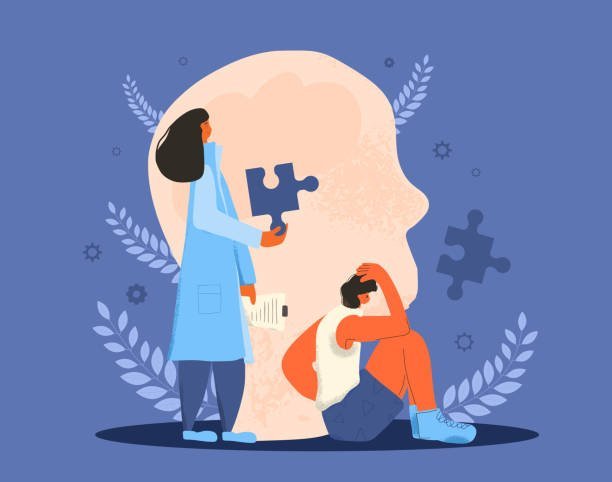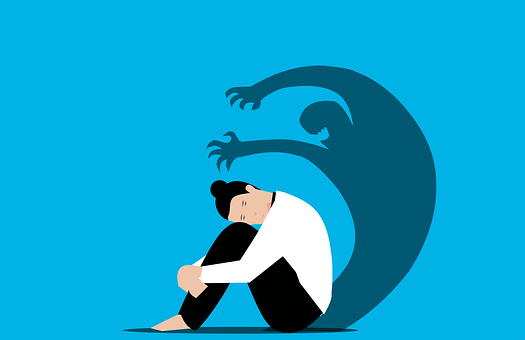Scrupulosity, informally known as religious OCD, is a unique representation of obsessive-compulsive disorder (OCD) that affects individuals from various religious communities. By definition, it is a variation of OCD where individuals are plagued with intrusive and blasphemous thoughts that directly challenge their belief systems and often lead to compulsions (Pirutinsky, Siev and Rosmarin, 2015). Individuals with scrupulosity can also fall into repetitive behaviors in the form of excessive prayer or performing ritual acts of cleanliness in an effort to decrease their anxieties and prevent their intrusive thoughts from becoming a reality (Awad, 2017). In simpler terms, this mental disorder affects how people think about their religion, and can be understood as having uncontrollable blasphemous thoughts, which leads to excessively repeating religious acts as a way to lessen their anxiety, and unreasonably prove their religious devotion to themselves. This disorder is particularly interesting in that it represents how people’s cultural, religious and environmental influences can have a deep and lasting effect on their state of mind.

Although older faith communities didn’t exactly know how to categorize this peculiar set of behaviors, it has been discussed and reported for quite some time. Reports go back as early as the 9th century for Muslim traditions (Awaad & Ali, 2015), the 11th century within Jewish traditions, and the 16th century for Christian traditions respectively (Steketee, Quay and White, 1991). Both Sigmund Freud and much before him, Abu Zayd Al-Balkhi, played an important role in bringing nuance to our current understanding of scrupulosity, and identifying it as a mental health disorder affecting society. Both Freud and Al-Balkhi noticed an important relationship between religion and OCD and recorded their findings in their books titled, The Future of An Illusion (Freud, 2012) and Sustenance of the Body and Soul respectively (as cited in Awaad & Ali, 2015). Nevertheless, research in this field is still scarce because of lack of inquiry into this variation of OCD, and the mental health stigma associated with getting help for this disorder (Ali, Mujawar, Davis, Chaudary, Saldanha, 2021).
Symptoms
The symptoms tend to overlap across various religions. Three main categories of this disorder fall under acts of worship, cleanliness for prayer and blasphemous thoughts about single or multiple god/gods. For example, individuals begin to obsess about making mistakes in their ritual prayers and may start spending large portions of their day repeating and perfecting it (Awad, 2017). It begins to disrupt their daily lives, until prayer is no longer an enjoyable experience, but a cause of anguish and distress.

Cleanliness becomes another stress inducer, as a lack of cleanliness is mentally linked to something terrible happening (i.e invalidation of all religious acts leading to divine punishment). It is important to mention that the significance of cleanliness is definitely emphasized in a lot of religions. In particular, not being clean or having certain categories of filth on your body during religious acts may invalidate the action (Awad, 2017). However, people affected by scrupulosity become overly obsessed with remaining clean and begin to irrationally fear touching unclean things and invalidating their physical or spiritual purity. This once again, leads to a major disruption of their lives with an obsessive focus to perfect themselves, and perform their religious acts correctly, and in a manner that is accepted.

Blasphemous thoughts tend to be the most unique combination of psychological and physical distress. Their intrusive thoughts can range from being an aggressive to a sexual nature, where they have strong and obtrusive mental images of aggression against or having sexual relations with sacred or divine figures (Ali et. al, 2021). This may lead them into developing repetitive or avoidant behaviors as a way to decrease the stress and anxiety from having these intrusive thoughts. Additionally, they have increased anxiety, tightness in the chests, and are no longer able to function normally in their daily lives (Ali et. al, 2021). Moral thought-action fusion is another crucial factor that describes this category more deeply. This is essentially the belief that having moral thoughts holds an important weight, which is inextricably linked to how one behaves (Siev, Chambless and Huppert, 2010). In other words, believing that one’s thoughts determine one’s actions. Moreover, because a lot of the religions emphasize the importance of having good thoughts, uncontrollable sexual or aggressive mental images of divine entities become extremely stressful and anxiety inducing. The disorder begins to challenge their own understanding of their religious identities and makes them believe they aren’t good enough and need to prove their belief to themselves through repetitive acts (Awad, 2017). The day turns into a grueling mental fist fight where affected individuals try to prove to themselves that they don’t actually believe the things that come up in their mind.

Possible Inducers
Where do all of these tendencies root from? Steketee et. al (1991) explain how people brought up in religious households focused on moral uprightness but to a pedantic or perfectionistic standard, are places where individuals are more likely to develop OCD like symptoms. Similar to Siev et. al’s (2010) concept of moral thought-action fusion, when immoral thoughts are equated to immoral actions, a need to control these thoughts becomes necessary. Moreover, individuals suffering with scrupulosity often have a very negative image of God, where they often understand God to be unfair or extremely punishing (Pirutinsky et, al, 2015). This explains how guilty and anxious they become in trying to perfect and correct their seemingly inappropriate behaviors or blasphemous thoughts.

Treatment and Cultural Issues
Originally, treating individuals with scrupulosity was quite tricky as seeking help itself was stigmatized (Ali et. al, 2021). In addition, therapists face a challenge in navigating through or using a patient’s spiritual beliefs as a means of healing (Verhagen, Van Praag, Lopez-Ibor, Cox and Moussaoui, 2010). This would turn more patients away as they would feel misunderstood and pressured into protecting their religious identity by avoiding seeking help. As this condition receives more limelight however, clinicians, therapists and religious clergy have begun to find a way to work together to help suffering individuals. For instance, combining aspects of cognitive behavioral therapy, negative mental images of divine figures are reimagined and put into perspective with the help of positive religious texts (Awad, 2017). In addition, another technique used is Exposure and Response Prevention (ERP), where individuals caught in a cycle of repetitive acts or taught to slowly break through them. For example, Awad (2017) explains how if the patient is afraid of impure things getting on their clothes, they would be asked to slowly ignore the need to constantly check their clothes for filth, and then eventually try to perform a religious cleaning act in a public bathroom (i.e not the best standards of purity) as a way to challenge the need to be perfectly clean.
Having scrupulosity is not different from other mental illnesses in that it makes you feel completely alone. It challenges your relationship with not only how you think of God, but also how you view yourself. In a way, it pushes you to seek isolation as a means of avoiding judgment from your community. Nevertheless, seeking out community, and asking for help may be the means through which this disorder receives more attention and challenges the mental health stigma seeped deep in our society.
~ Aisha Munshi

Aisha Munshi is a researcher/educator who is deeply passionate about religion, ethnocultural diversity, mental health and how they all intersect. She graduated with a M.A in Psychology from the New York University, NY and currently works as a researcher by morning, and teacher by evening. She loves to advocate and write about mental health issues, especially highlighting the stigma in her own South Asian community, in addition to issues that are usually not given that much attention.
References
Ali, T., Mujawar, S., Davis, S., Chaudhury, S., & Saldanha, D. (2021). Blasphemous thoughts in obsessive–compulsive disorder: A case series. Industrial Psychiatry Journal, 30(Suppl 1), S258.
Awaad, R., & Ali, S. (2015). Obsessional Disorders in al-Balkhi′ s 9th century treatise: Sustenance of the Body and Soul. Journal of Affective Disorders, 180, 185-189.
Awad, N. (2017, July 19). Clinicians, Imams, and the whisperings of satan. Yaqeen Institute for Islamic Research. Retrieved March 25, 2022, from https://yaqeeninstitute.org/read/paper/clinicians-imams-and-the-whisperings-of-satan
Freud, S. (2012). The future of an illusion. Broadview Press.
Pirutinsky, S., Siev, J., & Rosmarin, D. H. (2015). Scrupulosity and implicit and explicit beliefs about God. Journal of Obsessive-Compulsive and Related Disorders, 6, 33-38.
Siev, J., Chambless, D. L., & Huppert, J. D. (2010). Moral thought–action fusion and OCD symptoms: The moderating role of religious affiliation. Journal of anxiety disorders, 24(3), 309-312.
Steketee, G., Quay, S., & White, K. (1991). Religion and guilt in OCD patients. Journal of anxiety disorders, 5(4), 359-367.
Verhagen, P., Van Praag, H. M., Lopez-Ibor, J. J., Cox, J., & Moussaoui, D. (2010). Religion and psychiatry: Beyond boundaries. John Wiley & Sons.

